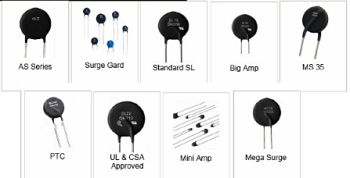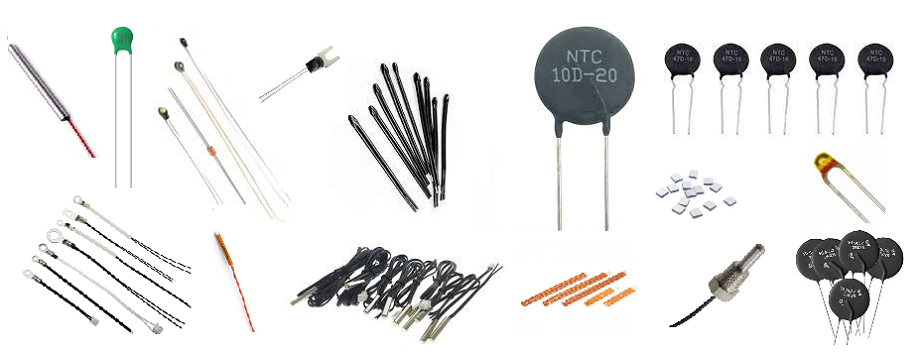NTC THERMISTOR PRODUCTS
 Ametherm offers a wide selection of NTC thermistors for a variety of applications in industries such as automotive, food handling and processing, telecommunications, medical and scientific research, military/defense, and consumer electronics where accurate temperature measurement and control are critical. Amtherm NTC thermistors are manufactured using sophisticated, state-of-the-art techniques to deliver high quality products suitable for the most demanding temperature sensing applications.
Ametherm offers a wide selection of NTC thermistors for a variety of applications in industries such as automotive, food handling and processing, telecommunications, medical and scientific research, military/defense, and consumer electronics where accurate temperature measurement and control are critical. Amtherm NTC thermistors are manufactured using sophisticated, state-of-the-art techniques to deliver high quality products suitable for the most demanding temperature sensing applications.
Thermistors exhibit a very high and precise temperature coefficient of resistance, and therefore they are temperature sensors especially suitable for numerous applications, such as:
- Temperature Measurement
- Temperature Control
- Inrush Current Limiters
NTC thermistor products are ceramic semiconductors composed of metal oxides that exhibit a very predictable and repeatable R-T characteristic. The oxides are derived from transition metals such as manganese, nickel, cobalt, and copper.

Ametherm manufacturers an extensive variety of NTC thermistors including interchangeable thermistors, end-banded chip thermistors, laboratory grade temperature thermistors, and inrush current limiting power thermistors, among others.
Ametherm is committed to delivering thermistor of the highest quality to exceed the expectations of our customers. Ametherm is able to achieve this through the substantial investments we’ve made in their manufacturing equipment and research.
For any questions regarding Ametherm’s NTC thermistors, NTC sensors, or any other products manufactured by Ametherm, please contact our sales / applications engineering team at [email protected].
Authorize Line: (*)
- Ametherm*
- Ampron*
- Asahi*
- Betatherm*
- Cantherm
- Microtherm
- Maida*
- QTI*
- Thinking Thermistors*
- Selco*
***************************
- Airpax*
- Ametherm*
- IBS
- GE Sensing
- Keystone Carbon Co.
- NEC / Tokin
- Rodan
- RTI Surge *
- Stetron International Inc.
- Therm-O-Disc
- Thermometrics
- Tokin
Here are some key characteristics and features of thermistors:
-
Resistance-Temperature Relationship: Thermistors have a nonlinear resistance-temperature relationship. There are two main types of thermistors based on this relationship: negative temperature coefficient (NTC) thermistors and positive temperature coefficient (PTC) thermistors.
-
NTC Thermistors: NTC thermistors exhibit a decrease in resistance as the temperature increases. They are commonly used for temperature measurement, control, and compensation. NTC thermistors provide a highly sensitive response in a specific temperature range, allowing for accurate temperature monitoring.
-
PTC Thermistors: PTC thermistors, on the other hand, show an increase in resistance as the temperature rises. They are often used in applications such as overcurrent protection, self-regulating heaters, and temperature control systems. PTC thermistors have a characteristic called the "positive temperature coefficient effect," which allows them to self-limit the current flow when the temperature exceeds a certain threshold.
-
-
Sensitivity and Accuracy: Thermistors offer high sensitivity to temperature changes, providing a more precise and responsive measurement compared to other temperature sensors. They can detect small temperature variations and convert them into corresponding changes in resistance. However, it's important to note that thermistors typically have a limited temperature range in which their sensitivity is optimized.
-
Operating Temperature Range: Thermistors are available in various models with different temperature ranges. The temperature range of a thermistor depends on its construction, materials used, and intended application. It's essential to select a thermistor that is suitable for the specific temperature range required in the application.
-
Response Time: Thermistors have a relatively fast response time due to their small size and intimate contact with the surrounding environment. This allows for quick temperature detection and response in dynamic systems.
-
Mounting and Connection: Thermistors are typically supplied in small packages or as bare components that can be mounted directly onto a circuit board or integrated into other systems. They usually have two lead wires for connection and are often encapsulated to protect them from environmental factors.
-
Applications: Thermistors find extensive use in various temperature monitoring, control, and compensation applications. Some common applications include:
- Temperature sensing and control in HVAC systems, home appliances, industrial equipment, and automotive applications.
- Overcurrent protection and thermal cutoffs in power supplies, battery chargers, and motor control circuits.
- Temperature compensation in precision electronic devices, such as thermometers, thermostats, and temperature controllers.
- Temperature measurement and monitoring in medical devices, incubators, and laboratory equipment.
Thermistors provide an effective and affordable solution for temperature sensing and compensation in a wide range of applications. Their compact size, high sensitivity, and rapid response make them a popular choice in the electronics industry.